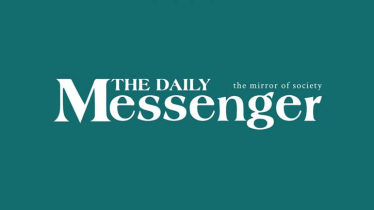
Loans benefiting from forbearance at the height of the pandemic proved more resilient than many had expected, and non-performing loans (NPLs) did not rise markedly in 2022. Starting 2023, however, uncertainty and risk remain elevated. It is heading into a cooling off period, with sharp reversals in monetary and fiscal stimulus expected to slow growth and gradually bring down inflation.
Credit growth: The combination of interest rates, tighter liquidity conditions, and risk aversion against a background of weaker economic growth will slow credit growth in most. However, a sharp pullback in credit provision remains unlikely, in part due to the lack of major credit booms over the last decade. Despite low interest rates, banks had remained more cautious with credit extension, reducing the likelihood of a sudden pullback in lending and sharp tightening of lending standards as experienced during the financial crisis.
With high domestic inflation, will remain exceptions to slowing credit provision, maintaining robust nominal credit growth even if credit contracts in real terms. It is likely to continue policies designed to boost credit provision targeting small and medium-sized enterprises in order to counteract its sluggish economic growth, as of contrast may see its higher inflation rates and low financial inclusion.
Pressure on debt service will gradually lift NPLs. The normalization of interest rates and the removal of extraordinary borrower support and forbearance that masked asset-quality problems at the height of the pandemic will put upward pressure on NPLs this year. The combination of tighter monetary policy and slowing global economic growth will affect the ability of borrowers to service debt, leading to a gradual increase in NPLs in 2023, in turn hurting bank profitability and capital buffers.
Positive note, growing impairment starts from historically low levels in many emerging economies, providing banks with more room to absorb asset-quality deterioration before problems become severe. Deploying multiple targeted support measures that will remain in effect in 2023. These will mitigate the impact of rising interest rates and higher prices on borrowers, helping to dampen the peak in cyclical NPLs.
Support measures fully phased to expect to allow market forces to reassert in 2023: Forbearance and other targeted borrower support will remain important in stemming asset-quality deterioration in response to cost pressures and interest rates. Measures such as interest rate caps are most likely with larger proportions of variable rate borrowers and which are undergoing more aggressive policy rate increases. Loan moratoria and credit holidays are likely to be directed to segments experiencing acute shocks or greater erosion of income streams, such as exporters and small- to medium-sized enterprises.
Worsen fiscal positions. Government fiscal deficits might have increased, prompting to borrow more heavily from domestic banks, leaving banks vulnerable to sovereign debt rescheduling and arrears accumulation. Higher borrowing costs and expanded debt stocks have caused significant challenges, may increase the likelihood of sovereign debt restructuring (on both external and domestic liabilities) and default, exposing banks to substantial losses. Falling prices for government bonds would lower their market value as collateral for funding, increasing liquidity risks, while generating mark-to-market impacts on profitability.
An expected lending slowdown: Facilitated by low interest rates, mortgage loan disbursement remained strong throughout the pandemic but high inflation, falling living standards, and higher interest rates will reduce the affordability of housing loans. Market correction will have adverse implications for lending, funding, profitability, and potentially even for financial stability given the large share of variable rate loans. Private sector credit remained sluggish with a 13.92% year-on-year growth in November 2022, reflecting slowdown in economic activities amid liquidity shortage and high inflation.
The banking sector has been going through a slowdown in credit growth since September 2022, breaking the upward trend of the previous six months because of import restrictions imposed by the Bangladesh Bank to save foreign exchange reserves. Tight financial conditions: New wholesale bank borrowing conditions will continue deteriorating and domestic deposit growth is likely to slow as household and corporate deposits are hurt by pressure on living standards and slower economic activity. Continued dollar strength, in part reflecting further US rate tightening, would increase the local currency cost of unhedged foreign exchange funding.
Impacts are likely to vary, benefiting banks that previously have locked in large volumes of long-term funding at historically low rates, while penalizing those that are more exposed to short-term refinancing "extension risk". This threatens may increase cost levels for new capital instruments and may curtail available investor demand. Banks' profitability may face downward pressure: It may foresee two-way bank profitability in 2023. Declining asset quality is likely to push profits lower as inflationary pressures (specifically, higher energy and food prices) damage the financial position of households and corporates, and banks adapt with higher loan-loss provisions and write-offs. Rising inflation has prompted central banks globally to tighten monetary policy and expected further monetary tightening, increasing funding costs for banks and curtailing the debt-service capacity of borrowers.
In addition, higher operational and refinancing costs are likely to squeeze earnings. Domestic economic slowdown will encourage tighter lending standards and reduced loan demand, putting further pressure on bank earnings. Counterbalancing this, rising interest rates should support margins, cushioning the decline in earnings and permitting improvements in profitability in stronger-performing geographies and over the longer term. Escalating cost pressures may increase the risk and additional taxes may impose on banks: Strong and sustained lending throughout the pandemic accompanied by better-than-expected loan performance lifted bank. Persisting energy cost pressures and the associated deterioration in fiscal positions increase the likelihood of countries imposing temporary additional sector-specific taxes, including on bank profits, particularly where government deficits and debt burdens are higher. Taxes risk discouraging large banks from lending while asset-quality pressures persist because of reduced post-tax margins while hindering bank capacity to bolster capital buffers.
Technological innovation versus changing the banking landscape: Traditional banks are also likely to continue establishing partnerships and making fintech acquisitions to capture access to financial innovation, alongside internal technological initiatives, to avoid losing their established positions. Migration from traditional "bricks and mortar" branches to electronic banking will continue, with physical networks being scaled back, along with wider use of non-digital ledger (blockchain) technologies such as artificial intelligence and multi-national initiatives for faster and cheaper payments.
ESG issues will remain a key focus area for regulators. Globally, regulators will need to balance the desire to prioritize funding for green initiatives without inadvertently cutting off access to funding for vulnerable developing economies that rely most heavily on energy intensive industries. Tactics are likely to introduce tighter regulations to identify and monitor ESG-related exposures and impose penalties on financial institutions that fail to meet new targets. Leading these initiatives ahead to push forward with Green deal initiatives to employ lending targets for renewable energy and other green nitiatives.
END/TMD/ARS








